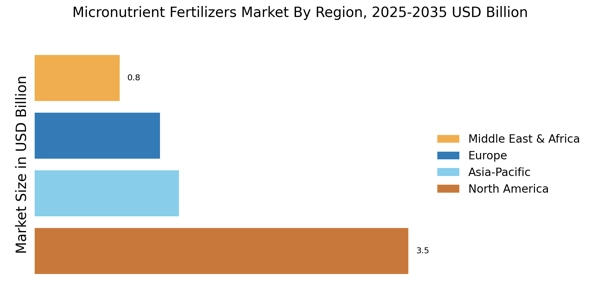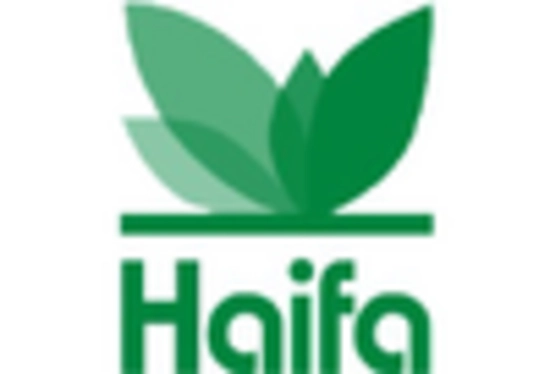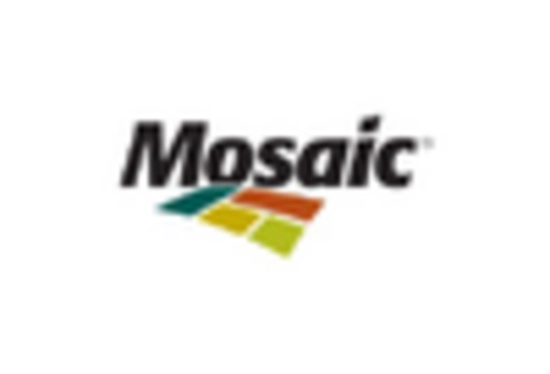Growing Focus on Soil Health
The Micronutrient Fertilizers Market is significantly influenced by the increasing emphasis on soil health. Farmers and agricultural stakeholders are becoming more aware of the critical role that micronutrients play in maintaining soil fertility and promoting sustainable farming practices. Research indicates that soils deficient in micronutrients can lead to reduced crop yields and lower quality produce. Consequently, there is a rising demand for micronutrient fertilizers to replenish these essential nutrients. The market for micronutrient fertilizers is projected to grow as more farmers adopt practices that prioritize soil health, thereby enhancing the overall productivity of their agricultural systems.
Increasing Crop Diversification
The Micronutrient Fertilizers Market is also being driven by the trend of increasing crop diversification among farmers. As agricultural practices evolve, farmers are shifting towards cultivating a wider variety of crops, each with distinct nutrient requirements. This diversification necessitates the use of specialized fertilizers, including micronutrient fertilizers, to meet the specific needs of different crops. Data suggests that regions with diverse cropping systems are witnessing a higher uptake of micronutrient fertilizers, as these products help optimize growth and yield across various plant species. This trend indicates a growing recognition of the importance of tailored nutrient management in modern agriculture.
Regulatory Support for Fertilizer Use
The Micronutrient Fertilizers Market is benefiting from supportive regulatory frameworks that encourage the use of micronutrient fertilizers. Governments are increasingly recognizing the importance of micronutrients in achieving food security and sustainable agriculture. Policies promoting the use of balanced fertilizers are being implemented, which is likely to boost the demand for micronutrient fertilizers. For instance, certain regions have introduced subsidies for farmers who utilize micronutrient fertilizers, making them more accessible. This regulatory support not only enhances the market potential but also aligns with global efforts to improve agricultural productivity and sustainability.
Rising Adoption of Precision Agriculture
The Micronutrient Fertilizers Market is experiencing a notable shift towards precision agriculture, which emphasizes the efficient use of resources. This approach allows farmers to apply fertilizers in a targeted manner, optimizing crop yields while minimizing waste. As precision agriculture technologies become more accessible, the demand for micronutrient fertilizers is likely to increase. According to recent data, the adoption of precision farming techniques has led to a 20% increase in crop productivity in certain regions. This trend suggests that farmers are increasingly recognizing the value of micronutrient fertilizers in enhancing soil health and crop performance, thereby driving growth in the Micronutrient Fertilizers Market.
Rising Consumer Demand for Nutrient-Rich Produce
The Micronutrient Fertilizers Market is significantly impacted by the rising consumer demand for nutrient-rich produce. As consumers become more health-conscious, there is an increasing preference for fruits and vegetables that are not only fresh but also rich in essential nutrients. This trend is prompting farmers to enhance the nutritional quality of their crops through the application of micronutrient fertilizers. Research indicates that crops treated with micronutrient fertilizers exhibit improved nutritional profiles, which can lead to higher market prices. Consequently, the demand for micronutrient fertilizers is expected to rise as farmers seek to meet consumer expectations and improve the quality of their produce.


















Leave a Comment